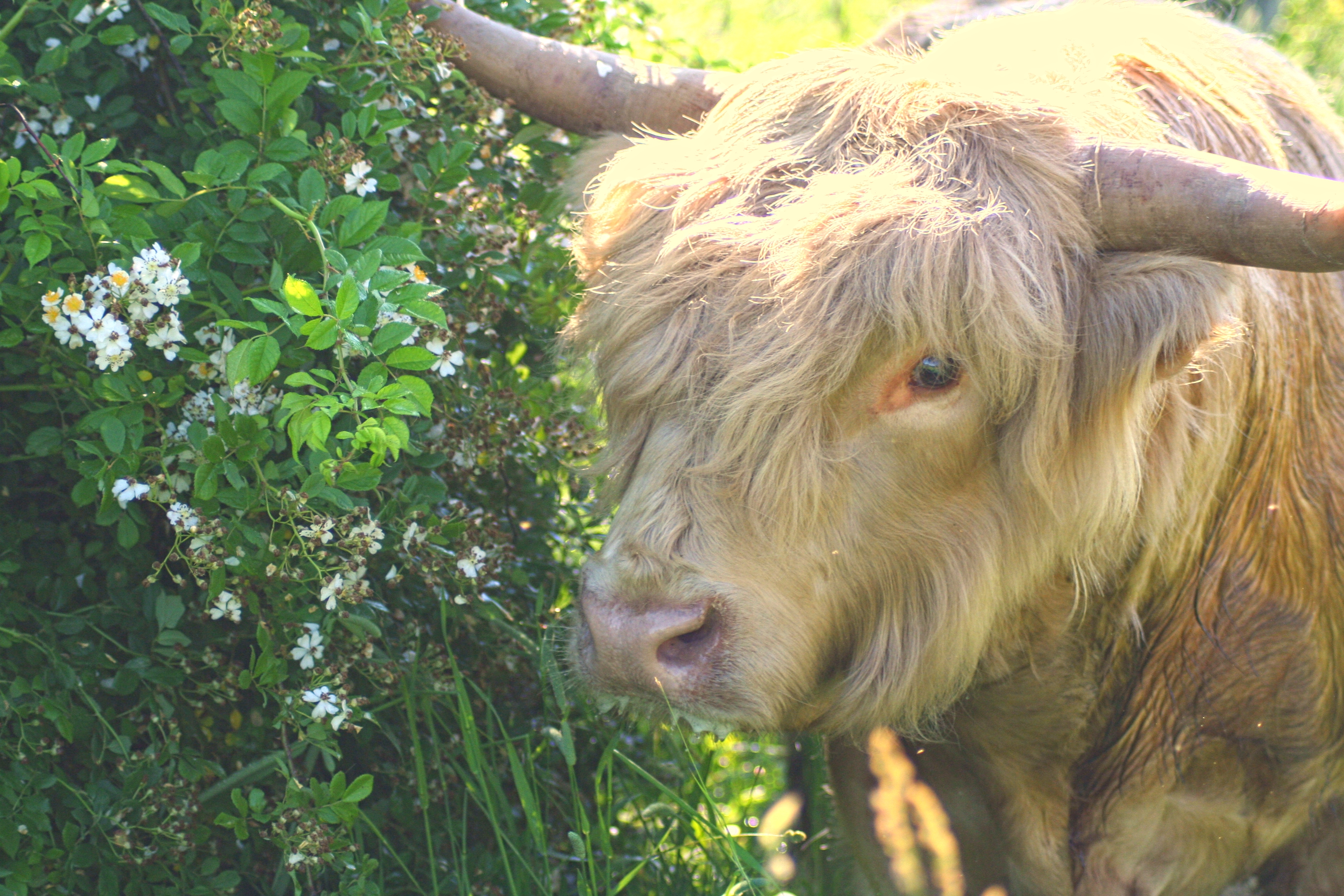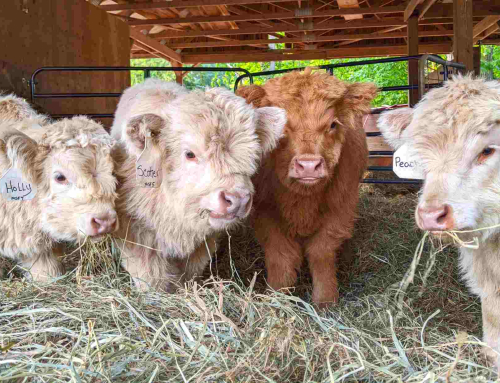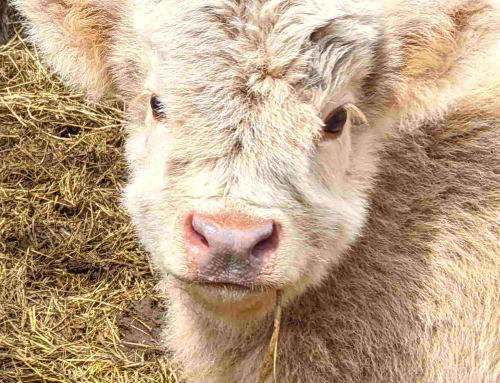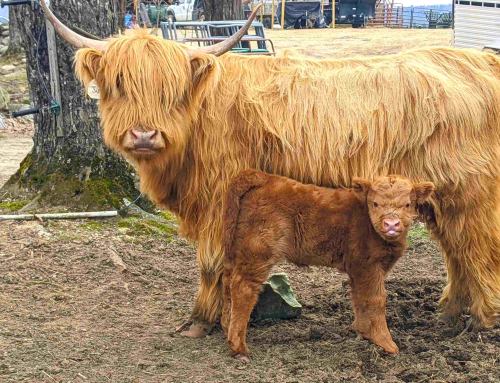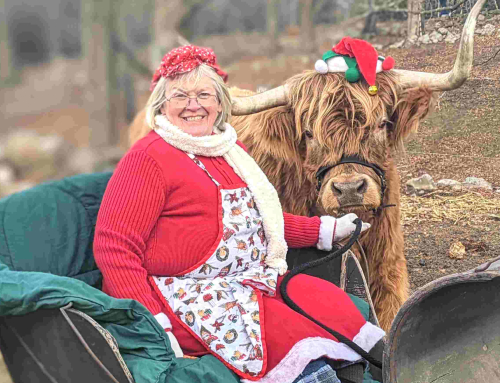It’s July. Time to relax at Wallis Sands Beach with a good book and cooler full of lemonade and grass-fed roast beef sandwiches. It’s time to wiggle toes in warm sand and watch seagulls scavenge for dinner, and it’s undoubtedly time to eat Walpole ice cream and splash barefoot through the waves… unless you are a beef farmer.
For me, July means it’s time to play matchmaker. It’s that time of year to plan for spring calves, which means finding the perfect mate for my cows. For Miles Smith Farm, the ideal time for the arrival of calves is late March and early April. Bitterly cold weather and most snow storms are over in late March, and April can be perfect calving weather; too cold for flies and just warm enough to keep calves from freezing to death. Since cows are pregnant for nine months, July and August is the time to breed.
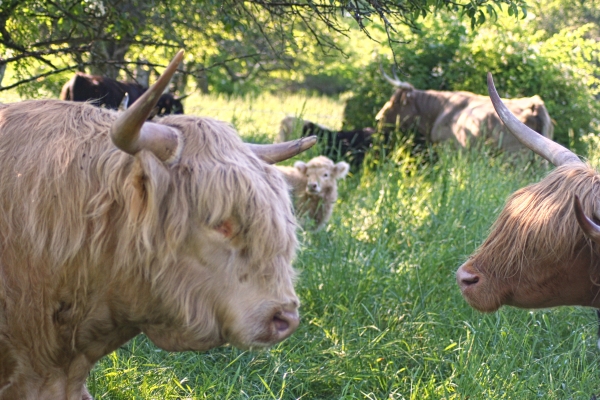
Washington, the bull, is greeted by Laverne a 10-year-old cow
In most cases, our pregnant cows give birth without assistance, but there are a few cases when farmer, and sometimes veterinary, help is required. If calves are due at about the same time, we can keep the mothers-to-be under observation, and, if necessary, pull a stuck calf, or assist with a breech birth. Watching for calves is stressful, which is why I like all the calves scheduled to arrive within six weeks.
Not all farmers want calves born at the same time. Dairy cattle must give birth in order to produce milk. Biologically the milk is for her calf, but shortly after delivery, the calf is removed from the mom. The cows are milked, and the milk is sold at grocery stores or turned into yummy ice cream and cheese. Because we drink milk 365 days a year, calves need to be born in every season.
Because we don’t milk our beef cattle, I have the luxury of planning for a spring crop of calves. To accomplish this, I put a bull with selected cows for what is called “pasture breeding.” This year Washington, a white Highlander bull, will hang out with 15 Highlander cows in our Barnstead pasture and Larry, a Hereford bull, will cavort with three Hereford/Angus cows in a Canterbury pasture. When the breeding is done, we separate the sexes, and the bulls are put in a separate field with steers.
I take my matchmaking role seriously. Washington and Larry were selected as breeding bulls because they have long backs and broad hindquarters, which means their sons will be beefy and their daughters should give birth easily. Besides physique, nature is also relevant. Both bulls can be led calmly on a halter without a worry about safety. This means they are not only safe to handle, but those “gentle genes” will be passed on to their offspring. There is no guarantee, but usually, a calm bull, bred to an affable cow, will produce a mellow calf.
It is also not guaranteed that the bull I pick will win the heart of every cow. My pick might not be rejected by Bessie or Maya, but Sarah might dote on him. The cow ultimately decides if she will accept the advances of a bull, and cows can be picky. So far, though, my cows have approved of Washington and Larry, so those boys will be pastured with their love-mates for six weeks – until mid-August.
It seems like a long way off, but March will be here soon enough and, if my matchmaking is successful, so will the babies. Let’s hope everyone gets along, and we will welcome 18 bundles of joy to the farm in the spring of 2020.



